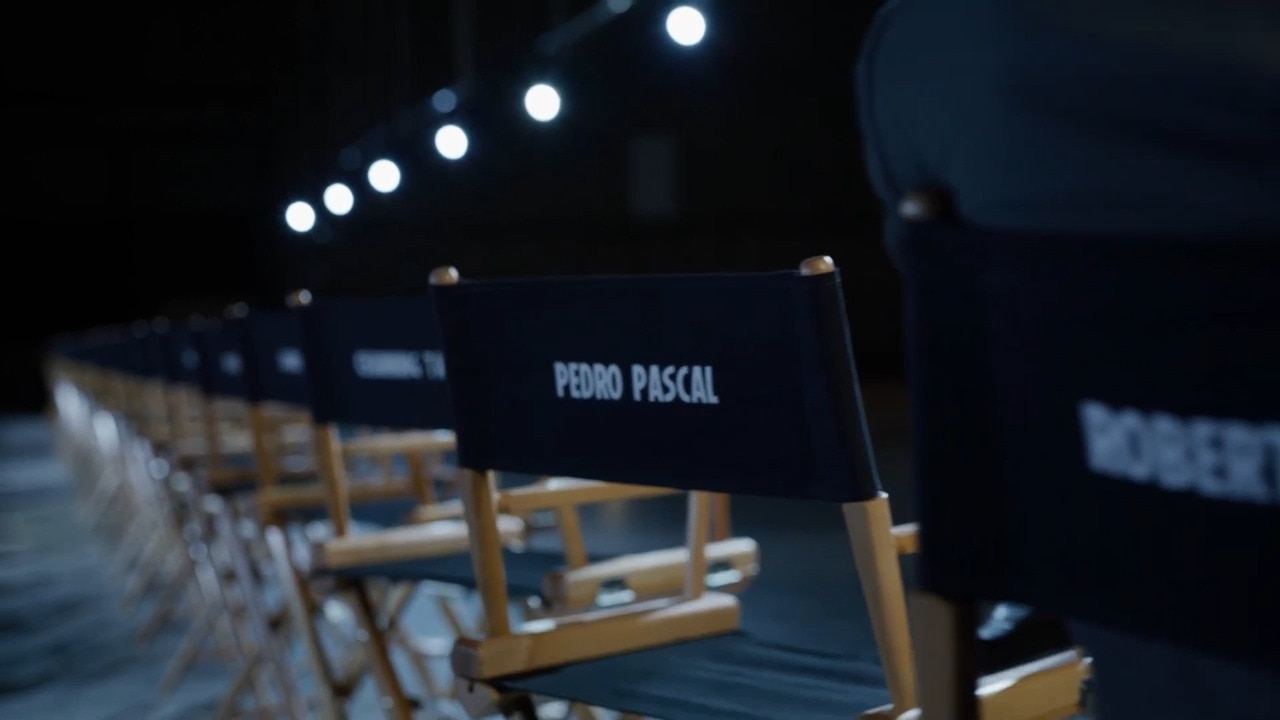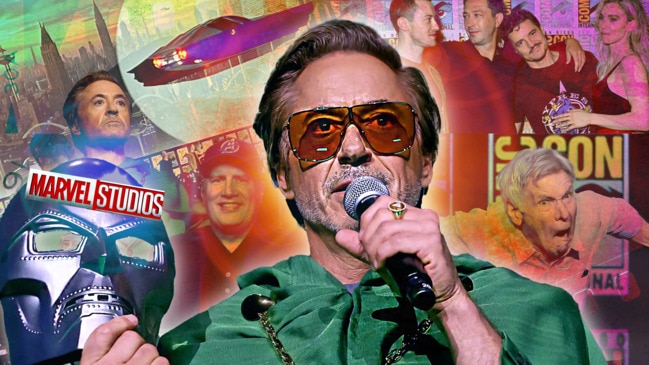Even Marvel knows its films and television shows must be better
The superhero studio, after a run of unprecedented successes, is cutting television production and fixing its film slate after fans lost the plot.

The head of Marvel Studios told colleagues recently that watching all the comic-book giant’s new television shows and films had started to feel more like homework than entertainment.
The problem, Kevin Feige acknowledged, was that in an effort to satisfy parent company Disney’s hunger for content on its new streaming service, the studio behind The Avengers churned out too many movies and shows with interconnected stories.
The deluge of material from the Marvel Cinematic Universe, or MCU, on Disney+ overwhelmed and eventually alienated viewers.
It also stretched Feige and his team’s resources thin, diluting the quality of their output. Marvel’s box-office sales, streaming popularity and formerly untouchable position in pop culture suffered.
Now, Feige is leading an internal overhaul aimed at getting the studio back on track. Marvel is making fewer TV shows, with stand-alone stories that don’t require prior knowledge of the MCU.
Feige is focused on fixing the studio’s movie slate following recent flops such as this year’s Captain America: Brave New World.
The first big test of his reset arrived in May with Thunderbolts, about a team of sidekicks, has-beens and other C-listers who save the world in the Avengers’ absence. But it is performing modestly.

Still, reviews for Thunderbolts were largely positive. If fans like the film, they’ll likely be primed to see The Fantastic Four: First Steps, out in July. That movie’s story will lead directly into a pair of Avengers sequels in 2026 and 2027 that Marvel needs to be massive hits to restore its former glory.
Feige declined requests for an interview. This article is based on interviews with more than a dozen people who have worked at Marvel or done business with the studio.
Feige, 51, is widely acknowledged as the most successful movie producer in modern Hollywood. After starting as an assistant to the producer of 2000’s X-Men, he was hired by Marvel that year and rose to become the final decision-maker on everything from scripts to casting, editing and visual effects.

Under his guidance, Marvel released an unprecedented string of hits including Iron Man (2008), Guardians of the Galaxy (2014) and Black Panther (2018). Along the way, Marvel was acquired by Disney for $US4bn in 2009.
Its crowning achievement was 2019’s Avengers: Endgame, which united the storylines and characters of all 21 films that preceded it and grossed $US2.8bn, a record at the time.
During Marvel’s heyday in the 2010s, Feige was heavily involved in film development. He deployed lower-ranking executives to supervise shooting, then got his hands dirty again in the editing room, often making significant changes and ordering new scenes. His longtime deputy, Louis D’Esposito, had a recurring joke: “We can fix any movie if we shoot it again.”
On 2013’s Thor: The Dark World, there were 35 days of reshoots – longer than the entire production of many low-budget films.

Though the studio had a few early duds, Feige’s process worked almost flawlessly for years. Every film Marvel released between 2010 and 2019 was a hit, grossing an average of about $US1bn. Fans loved that each had a distinct tone but were bound together by an overarching narrative.
The movies were overseen by a small team of creative executives who came to be known as “the parliament”. Most had been with the company since its founding or joined as assistants and were promoted, giving Marvel a family-like culture. Feige was the studio’s beloved and charismatic dad – a creative genius from whom everyone sought attention and approval.
Soon after Endgame, creative staff members began meeting in their office on the Disney studio lot to figure out where the MCU could possibly go next. In the nearby executive building, Disney’s senior leadership had another priority. Chief executive Bob Iger was launching Disney+ as his answer to Netflix. He needed loads of new series for it and was counting on Marvel to provide many of them.
“The strategy became just expansion, expansion, expansion,” says a person who worked at Marvel at the time.

Feige recently told colleagues he agreed to the plan because of a zealousness to tell more stories and a desire to be an “excellent corporate citizen”. It turned out to be a mistake.
Marvel’s first two Disney+ shows came in 2021: the time-travel adventure Loki and WandaVision, which continued the stories of two heroes from Endgame in a satirical sitcom world. Both were hits.
But Marvel’s transition from producing a few hours of movie content annually to several dozen hours of streaming shows and films eventually broke down the studio’s processes. A pair of executives oversaw each show, while Feige remained the final decision-maker on every significant creative issue, even though there were exponentially more decisions to make each day.

People who worked at Marvel in the early 2020s say it was challenging to secure enough time with Feige to get his feedback. As a result, they sometimes spent weeks on work that proved irrelevant once he weighed in, then found themselves with little time to implement his changes before a deadline. Desperate staff members resorted to chasing Feige in the halls to get answers.
Long known as one of the most frugal studios in Hollywood, Marvel began spending like crazy. As at other media companies starting streaming services, cost was no object in the race to impress Wall Street with big increases in subscribers. Marvel series made in the early 2020s regularly cost more than $US100m a season and sometimes approached $US200m because they included A-list actors and costly visual effects.
The internal dysfunction began to show in Marvel’s output. Viewers complained that there was too much Marvel content to keep up with and a growing proportion of it felt subpar.
“I loved it for so many years, but after all the TV shows and everything, it just started getting a little confusing and all over the place,” says Leslie Rodriguez, 23, a social-media manager. Fans rejected big-budget event series such as the alien-attack drama Secret Invasion, starring Samuel L. Jackson.
Shows the company was proud of, including Ms Marvel, about a Pakistani American teenager who gains superpowers, failed to attract many viewers.


In theatres, Marvel’s biggest hits during this period were nostalgia plays that tied up old storylines, such as Spider-Man: No Way Home and Deadpool & Wolverine.
Ant-Man and the Wasp: Quantumania was critical to the MCU’s future because it featured the title villain of the next planned Avengers sequel, subtitled The Kang Dynasty. But the early 2023 film flopped at the box office and was widely panned.
Employees talked regularly about Marvel fatigue. They worried they had created a “no new fans club” in which people unfamiliar with the state of the MCU couldn’t watch a new release because they’d have no idea what was going on.
Meanwhile, Wall Street’s obsession with streaming growth gave way to a focus on profitability. Iger and Feige began scrutinising Marvel’s costs and creative choices more closely. At the last second, Marvel decided the script for its vampire movie Blade wasn’t good enough and halted production in 2023, while equipment was being shipped to soundstages in Atlanta.
When production started on the 2023 film The Marvels, the filmmakers received little attention from the overstretched Feige. After Ant-Man and the Wasp: Quantumania bombed, Feige became more involved, hoping to avoid a second faceplant in one year.
The filmmakers cycled through dozens of versions of a voice-over to catch up viewers with plot points from past movies and series they needed to understand, but it wasn’t enough.
The Marvels, which cost about $US300m (about $450m), was Marvel’s biggest bomb, grossing just $US206m.
Since Marvel’s early years, Feige’s parliament has gone to a retreat every autumn in Palm Springs, where they would plan out the future of the MCU.
The get-together in 2023 was sombre. Many of Marvel’s movies and TV shows weren’t working. The studio had just laid off employees for the first time in its history.
Parliament members discussed whether they could salvage plans for Avengers: The Kang Dynasty. They also talked about a new TV strategy in which shows would have plots divorced from the MCU, making them easier for new fans to understand.
The company decided to cut back significantly on TV production. “Quantity, in our case, diluted quality – and Marvel has suffered greatly from that,” Iger said at New York summit.
Marvel is releasing only one or two live-action streaming series annually starting in 2026 and has already ordered several seasons of some so their stories can continue without crossing over to the big screen.
A senior executive is overseeing TV so Feige can focus on film.
Marvel’s top priority is ensuring the next two Avengers extend the track record of the franchise, which has provided four of the company’s five highest-grossing films.
Early in 2024, executives decided to dump Kang and started brainstorming who would make a better antagonist for their next superhero team-up.
Feige had been talking for more than a year to Robert Downey Jr, who played Iron Man and was beloved by fans, about returning to the MCU. They discussed his playing Dr Doom, one of Marvel’s best known comic-book villains. But they hadn’t determined when or in what film.
Marvel executives concluded that Downey was the solution to their Avengers problem. They retitled the 2026 movie Avengers: Doomsday, with their biggest star in the title role.
Feige also rehired Anthony and Joe Russo, who directed Downey in Avengers: Endgame. Bringing back the talent behind a blockbuster for a sequel is one of the most expensive propositions in Hollywood, but people who have worked with Feige say he likes to go back to people he trusts, particularly in moments of urgency.

To get fans excited about the new plan, Marvel had Downey take off a Dr Doom mask and reveal himself at San Diego Comic-Con in 2024 – a moment that immediately went viral online.
In many ways, Marvel has reverted to its strategy from before the streaming boom, as if the past five years had been a bad dream.
As he did when Marvel Studios started, Feige has an expansive vision for his company’s big-screen future.
The upcoming Avengers movies are expected to introduce the X-Men, one of Marvel’s most popular superhero teams, to the MCU. Feige has told colleagues he has a 10-year plan for the characters.
The Wall Street Journal




To join the conversation, please log in. Don't have an account? Register
Join the conversation, you are commenting as Logout